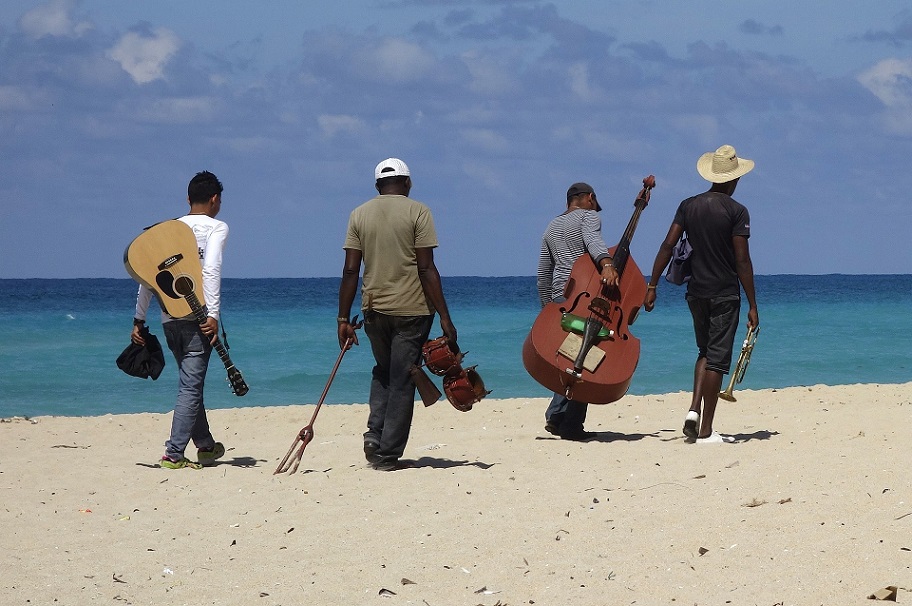Without going to university or studying music in an academy, he became the “Greatest minstrel of the Cuban Trova” and the king of the “double meaning”. And he bequeathed 31 fun and loving compositions to the culture of his homeland and to Cuba.
 María de Lourdes Legrá
María de Lourdes Legrá
Faustino Oramas, El Guayabero, was born in Holguín (Cuba) on June 4, 1911, although some relatives claim that he was born four years earlier.
He was a troubadour who travelled the villages of eastern Cuba, reached Spanish stages with the musician Santiago Auserón, Juan Perro, (leader of the famous Iberian rock group Radio Futura) and had the joy of having one of his most popular songs, “Tumbaíto”, performed by the famous actress and singer Libertad Lamarque. Just like other troubadours and soneros did in the first half of the 20th century, Oramas visited even the most remote villages in the country and performed many times in exchange for food or a place to spend the night.
On one of those journeys, in 1955, he arrived at the Guayabero farmhouse, where an affair with a local woman inspired him to compose the theme from which came the nickname by which we know him today: “En Guayabero, mamá, me quieren dar” (In Guayabero, mom, they want to give me).
 Little by little the tales around the musician dressed in a suit and with the chest adorned with various medals, some bestowed on him and others gifted, were woven.
Little by little the tales around the musician dressed in a suit and with the chest adorned with various medals, some bestowed on him and others gifted, were woven.
The playwright Amado del Pino said about him that “he always insisted that his coplas (songs) were innocent, that we, the listeners and dancers, had the dirty minds by dying them erotic or mischievous”.
“That is, it seemed clear that the so-called “double sense” functioned as a way to make the sexual or transgressive presence subtle, given with a grace that made it safe from the censors while opening the door to the joy of the complicit fans of Marieta’s dance or any of those delicious creatures and situations”, he added. In the documentary of the record company Egrem to pay tribute on the 110th anniversary of his birth, the pianist Frank Fernández tells that El Guayabero handled Cuban humour like Ñico Saquito, and could bring to mind any picaresque where a bad word was included, that who should include it was the listener, because he never said it.
Fernández stressed that he was also a chronicler of popular music, its environment and a brilliant narrator of good Cuban music, dedicated mainly to entertainment and fun.
 Meanwhile, guitarist Pancho Amat praised El Guayabero’s ability to rhythmic independence to play the tres cubano and, at the same time, sing those lyrics full of mischievousness, something very complicated to achieve.
Meanwhile, guitarist Pancho Amat praised El Guayabero’s ability to rhythmic independence to play the tres cubano and, at the same time, sing those lyrics full of mischievousness, something very complicated to achieve.
The creations of Faustino Oramas (who died on March 27, 2007) transcended national borders; for example, “Tumbaíto”, his first son montuno, became one of the most successful Cuban pieces of the 1940s and at the beginning of 1946 the Argentine singer Libertad Lamarque recorded it and made it very popular worldwide. He was also the first musician to receive the National Humor Award, and in 1980 he founded the group Los Guayaberos, which is still active and is proof of traditional Cuban music.
That is why today the tres continues to set the pace of El Guayabero’s songs as Cuban such as “Mañana me voy a Sibanicú” (I’m going to Sibanicú tomorrow), “Cómo vengo este año” (How I come this year), “La yuca de Casimiro” (Casimiro’s yucca), “Mi son retozón” (My frisky sound) and “A mí me gusta que baile Marieta” (I want Marieta to dance). PL
(Translated by Cristina Popa – Email: gcpopa83@gmail.com) – Photos: Pixabay












.jpg)












